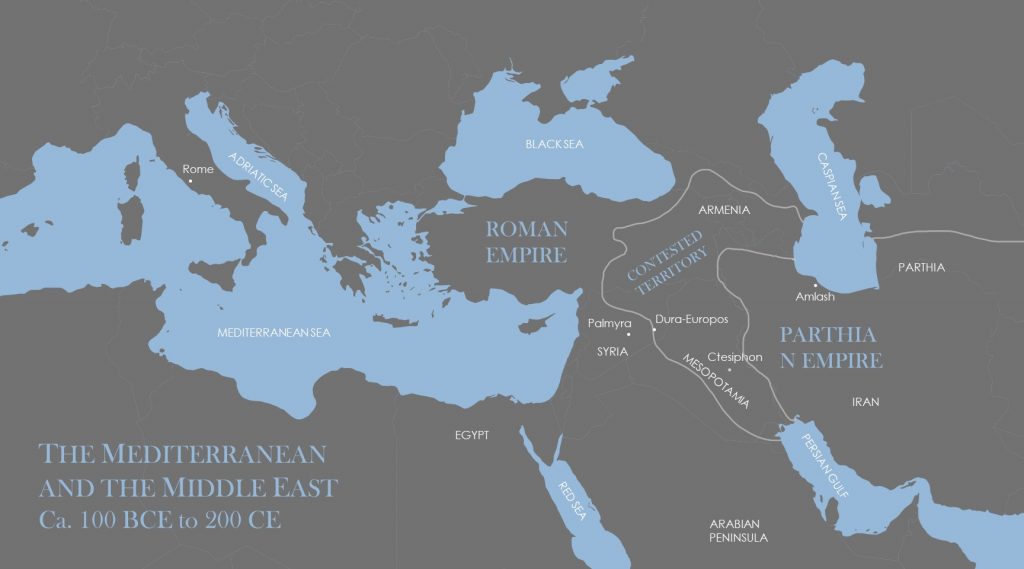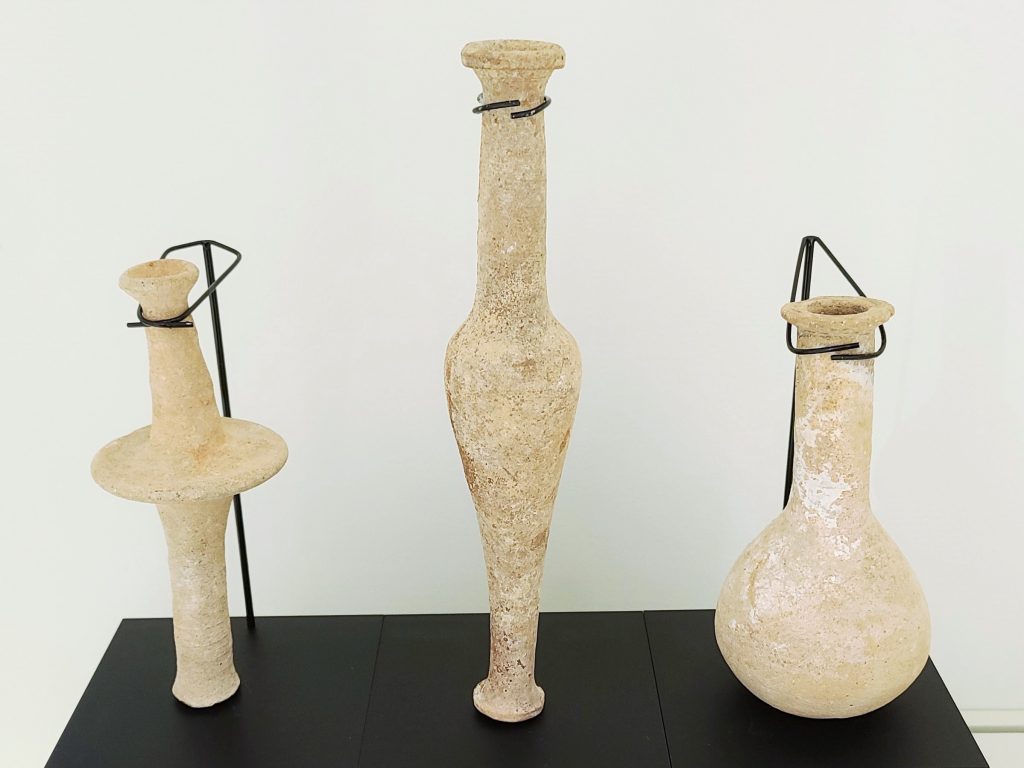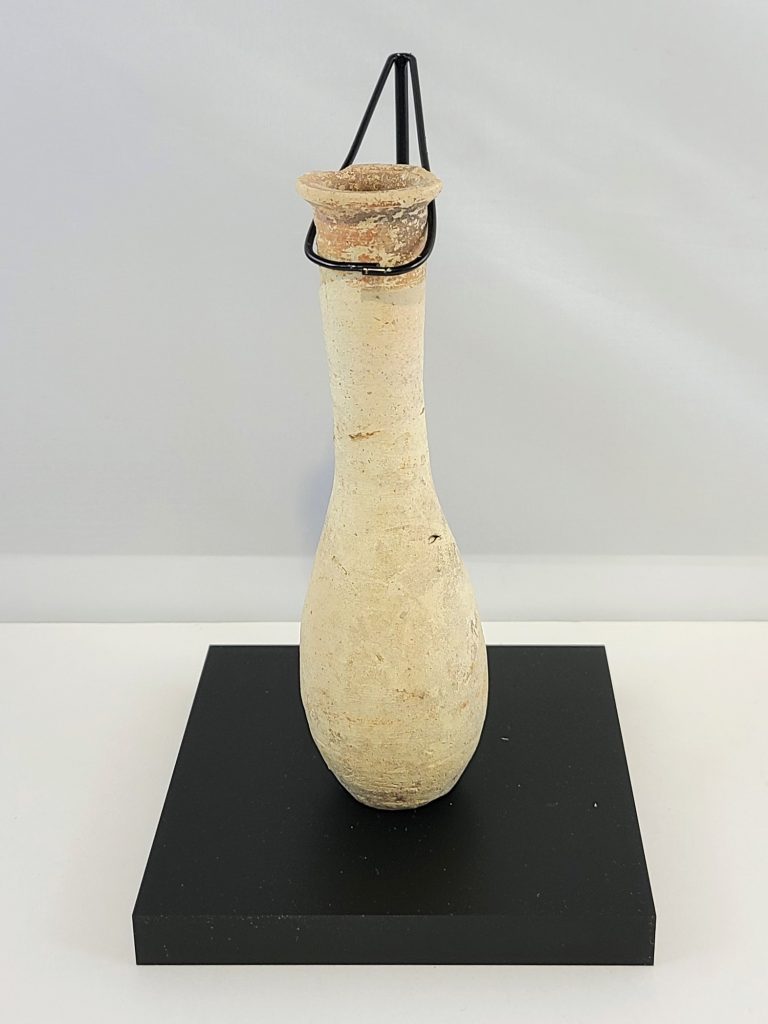The Middle East Between Rome and Parthia
Many of Museum’s pots are very similar to ceramics excavated from sites in the Middle East that are dated to the first two centuries CE. During this period, two major empires dominated western Asia. Rome controlled the eastern Mediterranean, while the Arsacid or Parthian dynasty dominated the regions of modern Iran and Iraq.
These two superpowers clashed over what is now Armenia, but in 30 CE the two emperors agreed upon a common border along the Euphrates river. This pact ushered in more than a century of peace and prosperity in the Middle East, and international trade flourished.
Merchant families in border towns made fortunes on the trade of exotic perfumes like frankincense and myrrh from southern Arabia. ‘Caravan cities’ like Dura-Europos and Palmyra changed hands between Rome and Parthia but were wealthy enough and far enough from the centers of imperial power to hold a large amount of cultural and political autonomy. The perfume bottles on exhibit here were part of the wealthy and interconnected culture that emerged during this time.


Fusiform and Piriform Unguentaria
3rd c. BCE to 2nd c. CE
Ancient perfume bottles take many shapes and sizes. The fusiform (spindle-shaped) type is common from the Hellenistic period (third century BCE) onwards, whereas the piriform (pear-shaped) type appears only after the early Roman imperial period (first century CE).

Unguentarium
1st to 2nd c. CE
Perfume bottles like this one would have traveled in stages from the Roman Mediterranean to Parthian Mesopotamia and Iran. Examples with a similar dark clay slip around the neck have been found at the famous merchant city of Dura-Europos, on the border between Rome and Parthia.

